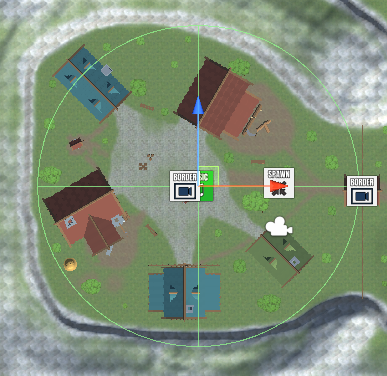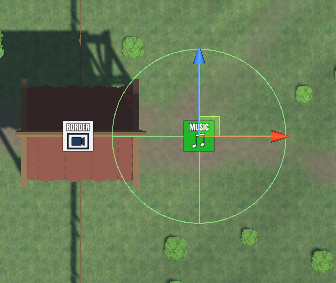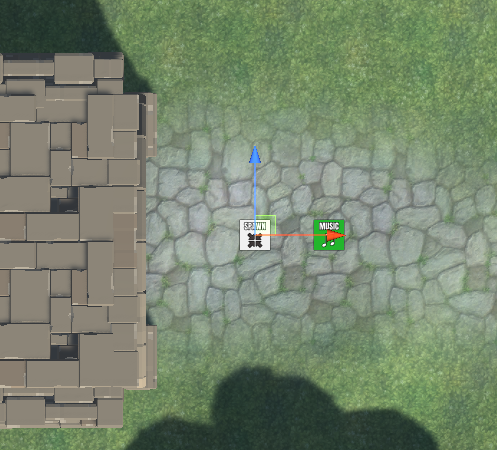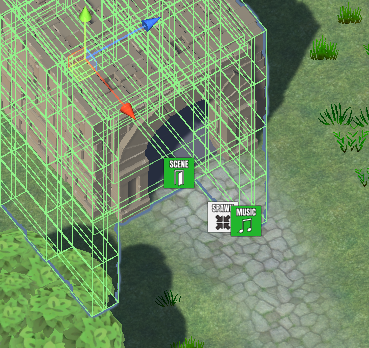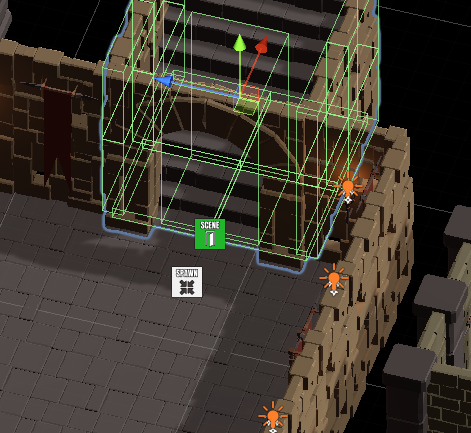In this tutorial we’ll add music and connect our game scenes.
We’ll set up:
- music clips in the editor
- add music and scene connections to our game scenes
Let’s get to it!
Music #
We’ll start with setting up the music.
Open the editor and navigate to Game > Music, we’ll change the Default music and add additional music.
You can find all the music audio clips in Assets/Tutorial Assets/Audio/Music/cynicmusic – in case you want to check out other tracks from the same composer, check out cynicmusic’s other assets on opengameart.org. Most of them are available under CC0 license.
0: Town #
- Name
Set to Town. - Audio Clip
Select TownTheme. - Loop Clip
Enable this setting.
1: Forest #
- Name
Set to Forest. - Audio Clip
Select GameMusic_ForestTheme_24. - Loop Clip
Enable this setting.
2: Battle #
- Name
Set to Battle. - Audio Clip
Select battleThemeA. - Loop Clip
Enable this setting.
Loop Settings #
We’ll use a loop within the track, i.e. at a certain position we’ll change the playback position back to a previous one.
Click on Add Loop.
- Use PCM
Enable this setting. - Check PCM
Set to 4086000. - Set PCM
Set to 607000.
You can test loops directly in the editor via the Test Loop button. The Game view has to be unmuted for this to work.
3: Victory #
- Name
Set to Victory. - Audio Clip
Select Heavy_ConceptB. - Loop Clip
Disable this setting.
The victory theme should only play once.
4: Lost #
- Name
Set to Lost. - Audio Clip
Select 025_A_New_Town.
Yeah, the name doesn’t match, but it sounds sad. - Loop Clip
Enable this setting.
5: Dungeon #
- Name
Set to Dungeon. - Audio Clip
Select song18. - Loop Clip
Enable this setting.
Save Changes #
That’s it for the setup.
Don’t forget to save your changes by clicking on Save Settings at the bottom of the editor.
World Scene Setup #
Next, we’ll set up the music and scene connections of our 2 game scenes – World and Dungeon. The rest of the scenes are used in a different way (for the start menu and battle scenes).
We’ll start with the World scene, which should still be open from the last tutorial, otherwise you’ll find it at Assets/Scenes/.
We’ll add a Music Player and Scene Changer (to connect to the Dungeon scene).
Town Music Player #
Music Players are used to, well, play music. Depending the setup, the music can start playing when loading into a scene, when entering a trigger, interacting with the music player and other ways. We’ll use trigger-based playing in the World scene to play different music in town and field/forest parts of the scene.
Use the scene hierarchy context menu (Makinom > Music Player (3D)) or the scene wizard (Create Object > Music Player 3D) to create a Music Player in the scene. The 3D variant will create it with a 3D collider (used as trigger) and a Trigger Enter start setup. The 2D variant does the same with a 2D collider, the regular variant (without 2D/3D) will create an autostart player (i.e. when the scene loads).
Change the game object’s name to Music Player Town.
Transform #
We’ll place the music player in the center of the town.
- Position
Set to X=85, Y=10, Z=85.
Music Player #
The Music Player component handles playing the music. It’s already set up to start on Trigger Enter (see the Start Settings of the component).
- Play Type
Select Fade To. - Music Clip
Select Town. - Fade Time
Set to 1. - Interpolation
Select Linear.
Sphere Collider #
We’ll increase the radius of the sphere to cover the town up to the gate, i.e. the player entering through the gate will start playing the music.
- Radius
Set to 60.
Field Music Player 1 #
Copy the Music Player Town game object and rename the copy to Music Player Field 1.
Transform #
We’ll place it at the exit of the gate.
- Position
Set to X=160, Y=10, Z=83.
Music Player #
We’ll fade to the Forest music.
- Music Clip
Select Forest.
Sphere Collider #
Decrease the radius.
- Radius
Set to 10.
Field Music Player 2 #
Copy the Music Player Field 1 and rename the copy to Music Player Field 2.
Transform #
We’ll place it at the exit of the dungeon (the brownish-gray building in the upper left part of the scene).
When we leave the dungeon, we’ll spawn within the music player and start playing the music.
- Position
Set to X=65, Y=10, Z=208.
We can keep the rest as it is.
Add Spawn Point #
Create a Spawn Point either using the scene hierarchy context menu (Makinom > Spawn Point) or the Makinom scene wizard (Create Game Object > Spawn Point).
This spawn point will be used when returning from the dungeon, so it should be placed at the dungeon entrance.
The spawn point automatically receives the next unused Spawn ID, which should be 1, since we already have 1 spawn point in our town (which has spawn ID 0). When returning from the dungeon, the scene changer will use spawn ID 1 to place us at this new spawn point.
Transform #
We’ll adjust the rotation of the spawn point’s game object, as we’ll use it for the rotation of our spawning player.
- Position
Set to X=63, Y=8, Z=208. - Rotation
Set to X=0, Y=90, Z=0.
Spawn Point #
And we’ll have to enable using the spawn point’s rotation when spawning the player.
- Use Rotation
Enable Y.
Add Scene Changer #
Usually we’ll add scene changers like spawn points, i.e. using scene hierarchy context menu or scene wizard to create a new game object.
For our dungeon entry, there’s already most of the setup done for us, as there is already a collider used as trigger added to it.
All we need to do is add a Scene Changer component to the Dungeon Entry game object.
So, select the Dungeon Entry game object (i.e. the root of the dungeon entry) and use the component menu to add a Scene Changer component.
Scene Change Settings > Scene Settings > Target Scene 0 #
All we need to do is set which scene should be loaded by the scene changer.
- Target Scene
Set to Dungeon. - Position Type
Select Spawn ID. - Spawn ID
Select Value > Value. - Value (Spawn ID)
Set to 0.
This will be the spawn ID of the spawn point we’ll add to the dungeon scene.
The rest of the scene changer’s setup is already how we need it, using Trigger Enter to start the scene change.
That’s it for the World scene – don’t forget to save your changes.
Dungeon Scene Setup #
Open the Dungeon scene, we’ll add:
- game starter
- music player
- spawn point
- scene changer
We don’t use Camera Borders in this scene, i.e. the camera is not restricted.
Add Game Starter #
Don’t forget that you need to add a Game Starter to a scene if you want to do a quick playtest right in the scene.
Create an ORK Game Starter either using the scene hierarchy context menu (ORK Framework > ORK Game Starter) or the Makinom scene wizard (Add ORK Game Starter > Add ORK Game Starter).
It doesn’t really matter where you place the game starter, but make sure to enable Start Game for quick game testing.
- Start Game
Enable this setting.
Add Music Player #
This time we’ll automatically start playing music when loading the scene.
Use the scene hierarchy context menu (Makinom > Music Player) or the scene wizard (Create Object > Music Player) to create a Music Player in the scene. It’s set up Start when the scene is loaded.
Music Player #
- Play Type
Select Fade Out Play.
This’ll fade out the current music and play the music player’s track afterwards. - Music Clip
Select Dungeon. - Fade Time
Set to 1. - Interpolation
Select Linear.
Add Spawn Point #
Create a Spawn Point either using the scene hierarchy context menu (Makinom > Spawn Point) or the Makinom scene wizard (Create Game Object > Spawn Point).
Place the spawn point at the entrance to the dungeon, i.e. in front of the staircase leading upwards.
Transform #
We’ll adjust the rotation of the spawn point’s game object, as we’ll use it for the rotation of our spawning player.
- Rotation
Set to X=0, Y=-90, Z=0.
Spawn Point #
And we’ll have to enable using the spawn point’s rotation when spawning the player.
- Use Rotation
Enable Y.
Add Scene Changer #
Like with the dungeon entry, the staircase already has a collider used as trigger added to it, so we just need to add the Scene Changer component.
Select the Entrance_Staircase_Block game object – you can easily select it by clicking on the arch of the staircase.
The scene changer has to be added to the root game object (Entrance_Staircase_Block), not one of it’s child objects. Use the component menu to add a Scene Changer component.
Scene Change Settings > Scene Settings > Target Scene 0 #
All we need to do is set which scene should be loaded by the scene changer.
- Target Scene
Set to World. - Position Type
Select Spawn ID. - Spawn ID
Select Value > Value. - Value (Spawn ID)
Set to 1.
This was the spawn ID of the spawn point we added in front of the dungeon entry.
And that’s it for now – don’t forget to save your changes.
Forest Battle Arena and Dungeon Battle Arena Scene Setup #
The setup for the Forest Battle Arena and Dungeon Battle Arena scenes is the same – all we need to do is add a Spawn Point at the center (X=0, Y=1, Z=0).
We’ll later use this to spawn the battle.
Add Spawn Point #
Use the scene hierarchy context menu to create a new spawn point: Makinom > Spawn Point
The Spawn ID should be set to 0.
Transform #
- Position
Set to X=0, Y=1, Z=0.
Start Menu Scene Setup #
And lastly, open the Start Menu scene.
We’ll add a music player to stop whatever music is playing and a game starter (but not set up to start the game).
Add Game Starter #
Use the scene hierarchy context menu to add an ORK Game Starter: ORK Framework > ORK Game Starter
We can keep the default setup – i.e. the Project asset is already selected and Start Game is disabled.
Add Music Player #
Use the scene hierarchy context menu: Makinom > Music Player
- Play Type
Select Stop.
Save the changes you’ve made in the scene.
Testing #
Open the World or Dungeon scene and hit play.
You can now move between scenes and enjoy how the music changes. Though, the scene changes look a bit off, because we’re missing the screen fades without having a UI system set up.
So, next, we’ll set up the UI system!
